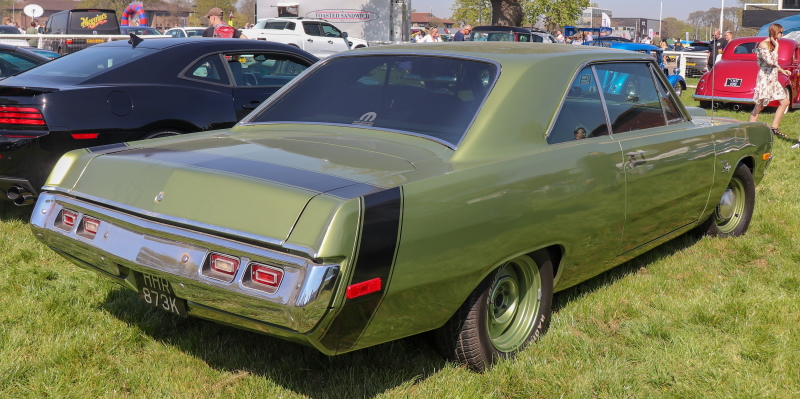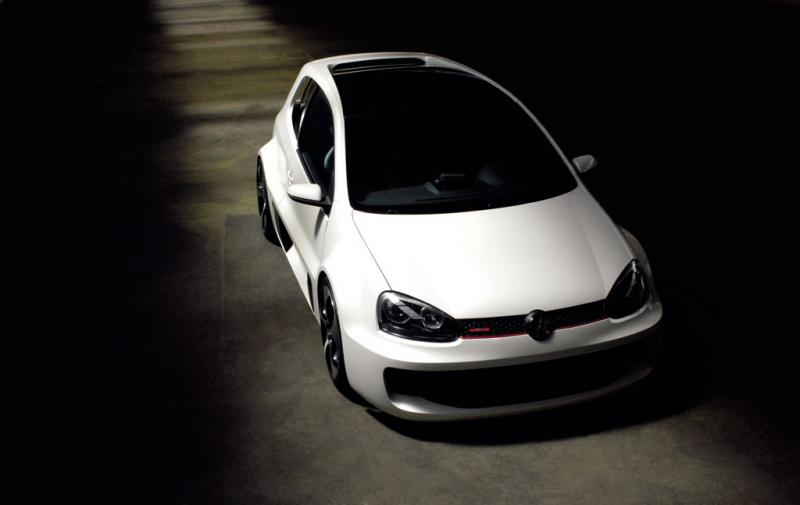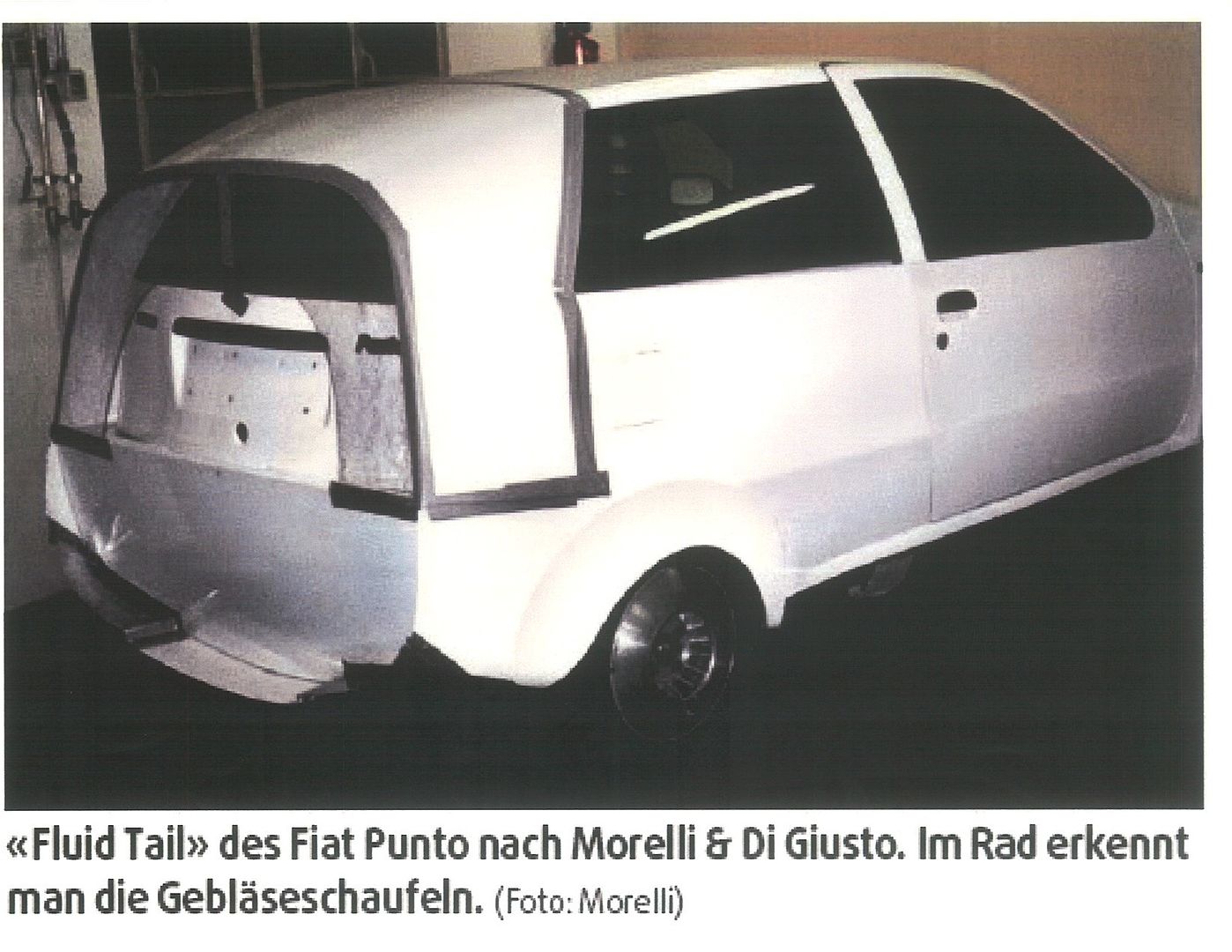 03-20-2020, 11:11 AM
03-20-2020, 11:11 AM
|
#11 (permalink)
|
|
Master EcoModder
Join Date: Dec 2016
Location: Florida
Posts: 493
Thanks: 84
Thanked 226 Times in 188 Posts
|
Quote:
Originally Posted by freebeard

No sanctioning body?
It's an architectural question. What is the vehicle in question? Does it even have quarter-windows? Do you want to cut gaping holes in the wheelwell?
|
No sanctioning body.
A 72 Dart.
I would make and/or cut gaping holes, if I had high confidence it would achieve desired result.
My biggest objection is cosmetic with gaping holes, same for scoops. It a personal thing. With this topic, my air intake location was intended to be rather out view, as the Nascar engine air inlet is at the front windshield base, mine would be at base of the rear window.
I have spoken and visited A2, but because of costs already mentioned, it will be more for verification testing to see what I finally work out, to see if it works or creates a problem, to a large degree, and limited by time/money.
I'm thinking because of what I am exploring here as a solution, because it is towards the rear of the car, it will have less other unintended negative consequences vs say if it was towards front of the car.
What I am not hearing is, and I still seeking, can you take a somewhat low pressure likely turbulent air pocket, and "suck it" enough to change the direction of nearby streamlines closer to where the air pocket was?
I get with a big enough bank roll I can find a definitive answer, but my starting point, first has anyone done it, and anything that educates me how it was done, how effective the result was, and how difficult, will be very helpful before I start.
Seems most aero centers around using/controlling high pressure/high flow areas, and I am focusing on reducing a low pressure area indirectly.
|
|
|

|
|
The Following 2 Users Say Thank You to j-c-c For This Useful Post:
|
|
 Today Today
|
|
|
|
 Other popular topics in this forum...
Other popular topics in this forum...
|
|
|
|
 03-20-2020, 11:52 AM
03-20-2020, 11:52 AM
|
#12 (permalink)
|
|
Moderator
Join Date: Feb 2012
Location: Urbana, IL
Posts: 1,939
Thanks: 199
Thanked 1,807 Times in 943 Posts
|
I'm unclear why you're dead-set on taking air from the base of the rear window (which, unlike the base of the front windshield, does not see high pressure), and what you mean by "reducing a low pressure area indirectly." To pull air from that location, you will need to create even lower pressure downstream, and you've selected a spot that is guaranteed to have lower pressure than almost anywhere else on the body, especially given the Dart's backlight shape (concave). If you manage to do that, that will almost certainly increase drag, since you'll be exacerbating the pressure differential between the front and rear of the car and possibly disrupting pressure recovery further back on the trunklid. You wrote that "aero DF" trumps everything, but it doesn't--if you're searching for faster lap times (which, if that's not the case, why are you tracking?), balance is everything. If a duct cools the rear brakes but increases drag and you end up with a slower lap time because of it, what good is that?
So everyone can get a visual, here's the back of a 1972 Dart:

I think you would be much better off taking in air in the extensive real estate available in front of the rear wheel arch (less drag, higher inlet pressure, shorter duct with less internal drag, no need for fans and further drag/power consumption). But, I would also back up and wait until you actually have a problem with rear brake temperatures to try and address.
As far as clean airflow for a wing--have you experimented with a wing? Is there a height limit? Have you looked at solutions like Mitsubishi's vortex generators at the top of the backlight, which are intended to address just such a situation as this (backlight too steep)?
If you can get your hands on a Magnahelic and take pressure readings along the centerline of the body while you drive, that might be illuminating. |
|
|

|
|
The Following 2 Users Say Thank You to Vman455 For This Useful Post:
|
|
 03-20-2020, 02:19 PM
03-20-2020, 02:19 PM
|
#13 (permalink)
|
|
Master EcoModder
Join Date: Aug 2012
Location: northwest of normal
Posts: 28,992
Thanks: 8,226
Thanked 9,000 Times in 7,434 Posts
|
Aha!
Quote:
|
What I am not hearing is, and I still seeking, can you take a somewhat low pressure likely turbulent air pocket, and "suck it" enough to change the direction of nearby streamlines closer to where the air pocket was?
|
The low pressure wake makes fingers that reach into any incipient turbulence and pulls backward on the rear of [your Dart]. If you apply power to the duct sucker, it will pull wake 'forward' limited only by the power you can supply.
I know, still not what you want to hear.
__________________
.
.Without freedom of speech we wouldn't know who all the idiots are. -- anonymous poster
________________
.
.Because much of what is in the published literature is nonsense,
and much of what isnít nonsense is not in the scientific literature.
-- Sabine Hossenfelder
|
|
|

|
 03-20-2020, 02:57 PM
03-20-2020, 02:57 PM
|
#14 (permalink)
|
|
Master EcoModder
Join Date: Dec 2016
Location: Florida
Posts: 493
Thanks: 84
Thanked 226 Times in 188 Posts
|
Quote:
Originally Posted by Vman455

I'm unclear why you're dead-set on taking air from the base of the rear window (which, unlike the base of the front windshield, does not see high pressure), and what you mean by "reducing a low pressure area indirectly." To pull air from that location, you will need to create even lower pressure downstream, and you've selected a spot that is guaranteed to have lower pressure than almost anywhere else on the body, especially given the Dart's backlight shape (concave). If you manage to do that, that will almost certainly increase drag, since you'll be exacerbating the pressure differential between the front and rear of the car and possibly disrupting pressure recovery further back on the trunklid. You wrote that "aero DF" trumps everything, but it doesn't--if you're searching for faster lap times (which, if that's not the case, why are you tracking?), balance is everything. If a duct cools the rear brakes but increases drag and you end up with a slower lap time because of it, what good is that?
So everyone can get a visual, here's the back of a 1972 Dart:

I think you would be much better off taking in air in the extensive real estate available in front of the rear wheel arch (less drag, higher inlet pressure, shorter duct with less internal drag, no need for fans and further drag/power consumption). But, I would also back up and wait until you actually have a problem with rear brake temperatures to try and address.
As far as clean airflow for a wing--have you experimented with a wing? Is there a height limit? Have you looked at solutions like Mitsubishi's vortex generators at the top of the backlight, which are intended to address just such a situation as this (backlight too steep)?
If you can get your hands on a Magnahelic and take pressure readings along the centerline of the body while you drive, that might be illuminating. |
I'm willing to sacrifice drag for DF. With this "brick's" drag I will never be able to find max top speed (track is Sebring btw).
I've got a differential Magnahellic, but haven't acquired a slightly expensive surface mount sensor, since drilling holes is not ideal for me..
My rear wing mount mounting position I prefer low vs high, mainly for rear sight lines, and a little for cosmetic. If I went high mount, and maybe added some vortex generators, this whole thread idea would vanish.
And yes, the spot I am focusing on is likely the worst spot, but then if I can help it with a "sucker" solution, so much the better?
The "dead on" aspect is a life time affliction for me unfortunately. 
|
|
|

|
 03-20-2020, 04:02 PM
03-20-2020, 04:02 PM
|
#15 (permalink)
|
|
Master EcoModder
Join Date: Aug 2012
Location: northwest of normal
Posts: 28,992
Thanks: 8,226
Thanked 9,000 Times in 7,434 Posts
|
I suspect that if you modeled this, you'd find that adding increasing amounts of horsepower would not decrease the pressure. You'd see more effect from the exhausted air, which I guess you are going to bleed into the wheelwells.
Go passive:

Remove the rear glass and make a plexiglass bubble inside.
__________________
.
.Without freedom of speech we wouldn't know who all the idiots are. -- anonymous poster
________________
.
.Because much of what is in the published literature is nonsense,
and much of what isnít nonsense is not in the scientific literature.
-- Sabine Hossenfelder
|
|
|

|
 03-20-2020, 10:21 PM
03-20-2020, 10:21 PM
|
#16 (permalink)
|
|
Master EcoModder
Join Date: Dec 2016
Location: Florida
Posts: 493
Thanks: 84
Thanked 226 Times in 188 Posts
|
Yes, upgrading the rear window design/shape is in the possible column, when looking at this with the car's proportions, it would almost need to reach the rear of the trunk lid to have any chance of attached air flow. Or I could build a Kamn(?) style rear lexan bubble window. But the DIY forming of a custom lexan one piece window is rather delicate, and would require an unknown learning curve for me. If I went to the trouble, I would prefer lexan over plexi and that also increases the difficulty. I had thought of in addition to this threads "sucker" idea of doing at least something very basic and simple to clean up the rear window area and maintain a partial stock silhouette. I would only remove the rear glass if needed or for weight saving, especially if I went with an open ended Kamn taper on a plastic rear window.
|
|
|

|
 03-21-2020, 03:21 AM
03-21-2020, 03:21 AM
|
#17 (permalink)
|
|
Aero Deshi
Join Date: Jan 2010
Location: Vero Beach, FL
Posts: 1,065
Thanks: 430
Thanked 669 Times in 358 Posts
|
Sorry, but it seems to me like you are focused on something that isn't going to have a real significant impact. Why would you not just get the best brake parts possible and rely on a basic scoop thing under the car to try and direct air through the rotor area. I really don't think any fan induced ventilation is going to get a lot of cooling CFM over the brakes. It would seem tires, weight distribution, and suspension set up would be your focus to go faster after you have the engine and gear box optimized. Keep in mind that drag is created when you cause the air to move, the more you make it move, the more energy it takes. Focus on "flow separation" and pressure areas is like debating how to best tie your shoe laces to go the fastest you can for a run. You have a balance that needs to be found between downforce and aero drag. You need the downforce for cornering and acceleration if you have a high enough horsepower driveline. But aero isn't really going to matter til you get into speeds over 130mph.
|
|
|

|
|
The Following User Says Thank You to ChazInMT For This Useful Post:
|
|
 03-21-2020, 12:00 PM
03-21-2020, 12:00 PM
|
#18 (permalink)
|
|
Master EcoModder
Join Date: Dec 2016
Location: Florida
Posts: 493
Thanks: 84
Thanked 226 Times in 188 Posts
|
I agree your logic is sound.
However, there are a number of race proven options that are off the shelf for fan cooling brakes. I will upgrade the brakes when I reach their limits, and hope I do no matter what path I take. I'm currently in 650hp range and it will be slightly detuned for added reliability. DF solves for a lot of other shortcomings, including the biggest one, the driver.
I don't want to beat a dead horse and take up more bandwidth, and thank you all for your contributions.  |
|
|

|
 03-21-2020, 02:36 PM
03-21-2020, 02:36 PM
|
#19 (permalink)
|
|
Master EcoModder
Join Date: Aug 2012
Location: northwest of normal
Posts: 28,992
Thanks: 8,226
Thanked 9,000 Times in 7,434 Posts
|
B-b-but beating dead horses is what we do here.
Instead of your fellow racers, consider Prof. Morelli's wind tunnel research.
https://ecomodder.com/forum/showthre...ail-33283.html

The thread has been 'Photobucketed' but if you dig deep enough you find his solution was to place an impeller in the wheel that sucked air in through the wheels center which filled the wheelwell and then exited through a Coanda nozzle to wrangle the turbulent flow around and behind the rear tires.
That how the scientist do.
__________________
.
.Without freedom of speech we wouldn't know who all the idiots are. -- anonymous poster
________________
.
.Because much of what is in the published literature is nonsense,
and much of what isnít nonsense is not in the scientific literature.
-- Sabine Hossenfelder
|
|
|

|
|
The Following User Says Thank You to freebeard For This Useful Post:
|
|
 03-21-2020, 02:57 PM
03-21-2020, 02:57 PM
|
#20 (permalink)
|
|
Master EcoModder
Join Date: Jan 2008
Location: Sanger,Texas,U.S.A.
Posts: 16,404
Thanks: 24,471
Thanked 7,410 Times in 4,800 Posts
|
sucking streamlines
Quote:
Originally Posted by j-c-c

No sanctioning body.
A 72 Dart.
I would make and/or cut gaping holes, if I had high confidence it would achieve desired result.
My biggest objection is cosmetic with gaping holes, same for scoops. It a personal thing. With this topic, my air intake location was intended to be rather out view, as the Nascar engine air inlet is at the front windshield base, mine would be at base of the rear window.
I have spoken and visited A2, but because of costs already mentioned, it will be more for verification testing to see what I finally work out, to see if it works or creates a problem, to a large degree, and limited by time/money.
I'm thinking because of what I am exploring here as a solution, because it is towards the rear of the car, it will have less other unintended negative consequences vs say if it was towards front of the car.
What I am not hearing is, and I still seeking, can you take a somewhat low pressure likely turbulent air pocket, and "suck it" enough to change the direction of nearby streamlines closer to where the air pocket was?
I get with a big enough bank roll I can find a definitive answer, but my starting point, first has anyone done it, and anything that educates me how it was done, how effective the result was, and how difficult, will be very helpful before I start.
Seems most aero centers around using/controlling high pressure/high flow areas, and I am focusing on reducing a low pressure area indirectly.
|
Introducing a local suction will result in a local equilibrium,as,as soon as the new local low pressure is introduced,the nearest air of any higher pressure will immediately displace towards it,from any direction,to cancel out the differential.
On a wing,you could use either a blown or suctioned slot to enhance boundary layer conditions.Freebeard may want to tell you about Dyson's 'Air Wrap' Coanda-effect hair care product, which recently hit the advertising airwaves.
Typically,added horsepower is required.Georgia Tech University has been trying to use powered slots to cut drag on 18-wheelers for a decade or so.Last I heard,the power required for the slot exceeded the benefit derived from the slot.
__________________
Photobucket album: http://s1271.photobucket.com/albums/jj622/aerohead2/
|
|
|

|
|